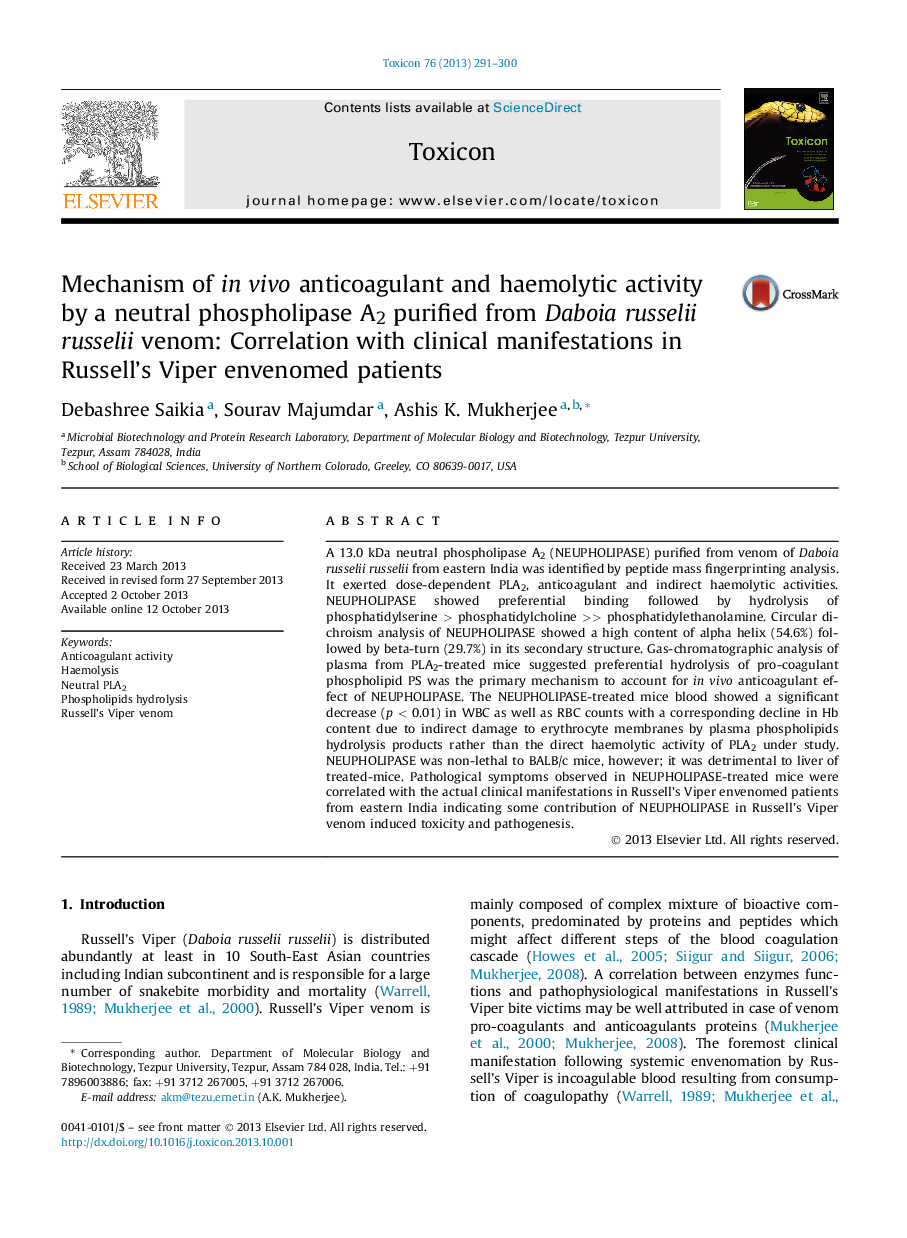| Article ID | Journal | Published Year | Pages | File Type |
|---|---|---|---|---|
| 8397132 | Toxicon | 2013 | 10 Pages |
Abstract
A 13.0 kDa neutral phospholipase A2 (NEUPHOLIPASE) purified from venom of Daboia russelii russelii from eastern India was identified by peptide mass fingerprinting analysis. It exerted dose-dependent PLA2, anticoagulant and indirect haemolytic activities. NEUPHOLIPASE showed preferential binding followed by hydrolysis of phosphatidylserine > phosphatidylcholine >> phosphatidylethanolamine. Circular dichroism analysis of NEUPHOLIPASE showed a high content of alpha helix (54.6%) followed by beta-turn (29.7%) in its secondary structure. Gas-chromatographic analysis of plasma from PLA2-treated mice suggested preferential hydrolysis of pro-coagulant phospholipid PS was the primary mechanism to account for in vivo anticoagulant effect of NEUPHOLIPASE. The NEUPHOLIPASE-treated mice blood showed a significant decrease (p < 0.01) in WBC as well as RBC counts with a corresponding decline in Hb content due to indirect damage to erythrocyte membranes by plasma phospholipids hydrolysis products rather than the direct haemolytic activity of PLA2 under study. NEUPHOLIPASE was non-lethal to BALB/c mice, however; it was detrimental to liver of treated-mice. Pathological symptoms observed in NEUPHOLIPASE-treated mice were correlated with the actual clinical manifestations in Russell's Viper envenomed patients from eastern India indicating some contribution of NEUPHOLIPASE in Russell's Viper venom induced toxicity and pathogenesis.
Related Topics
Life Sciences
Biochemistry, Genetics and Molecular Biology
Biochemistry, Genetics and Molecular Biology (General)
Authors
Debashree Saikia, Sourav Majumdar, Ashis K. Mukherjee,
